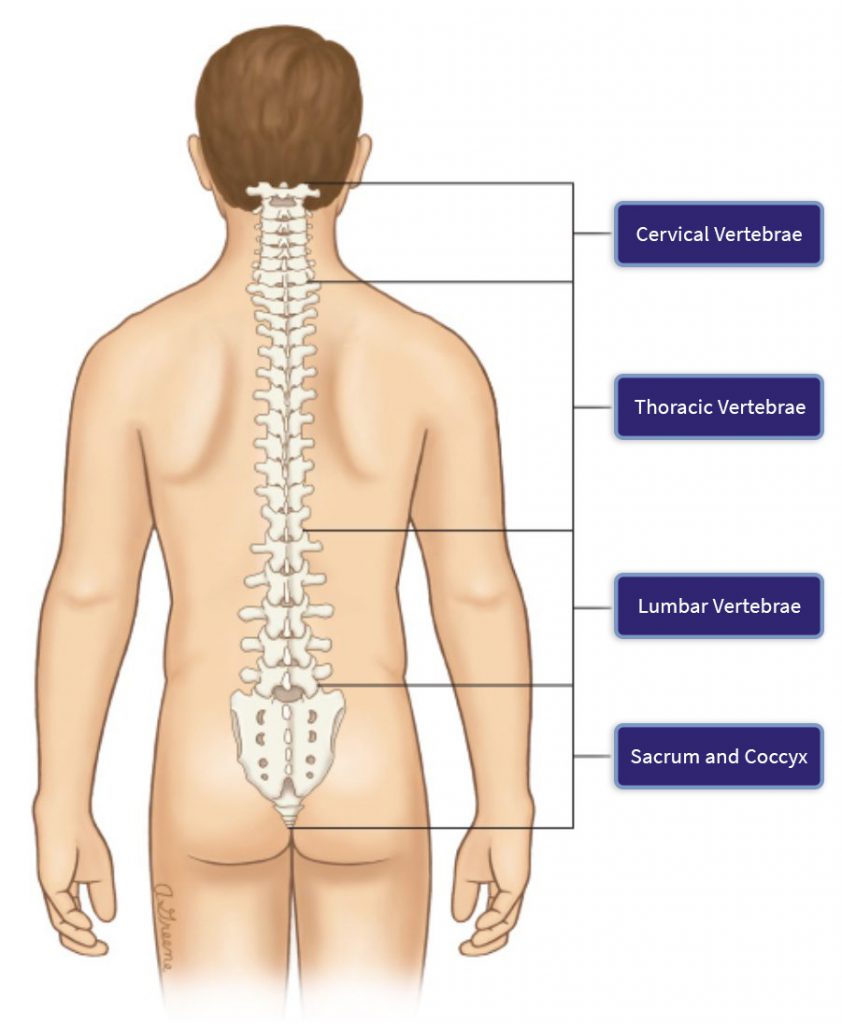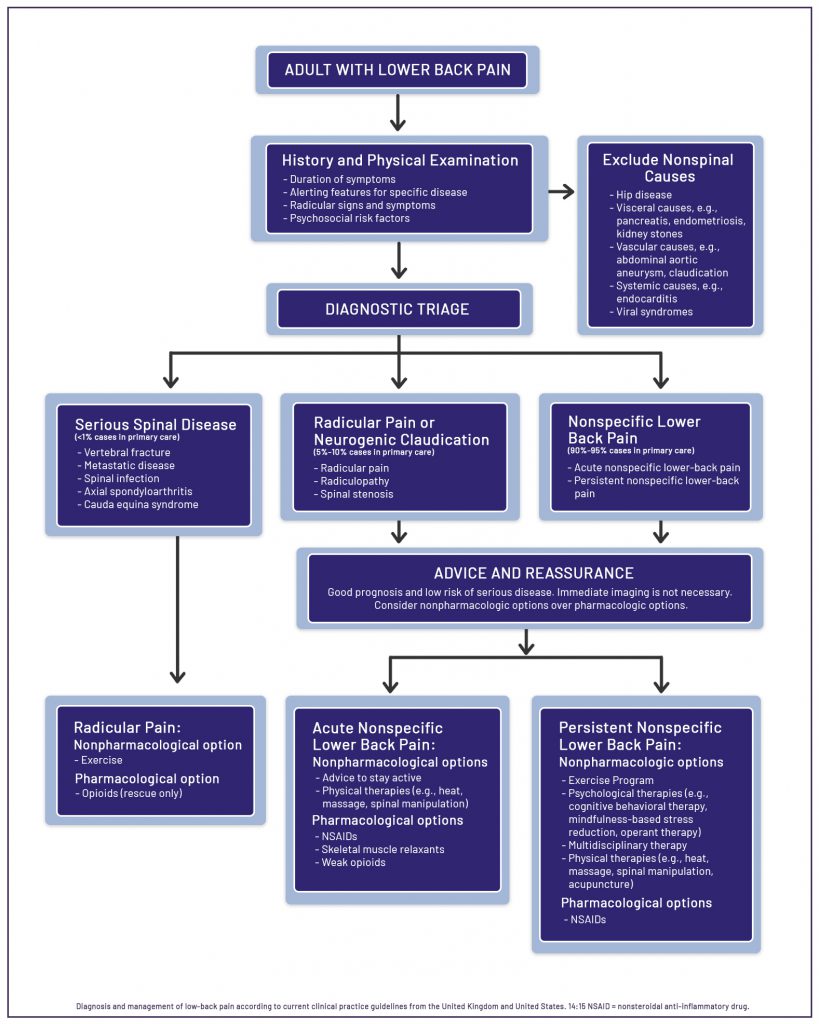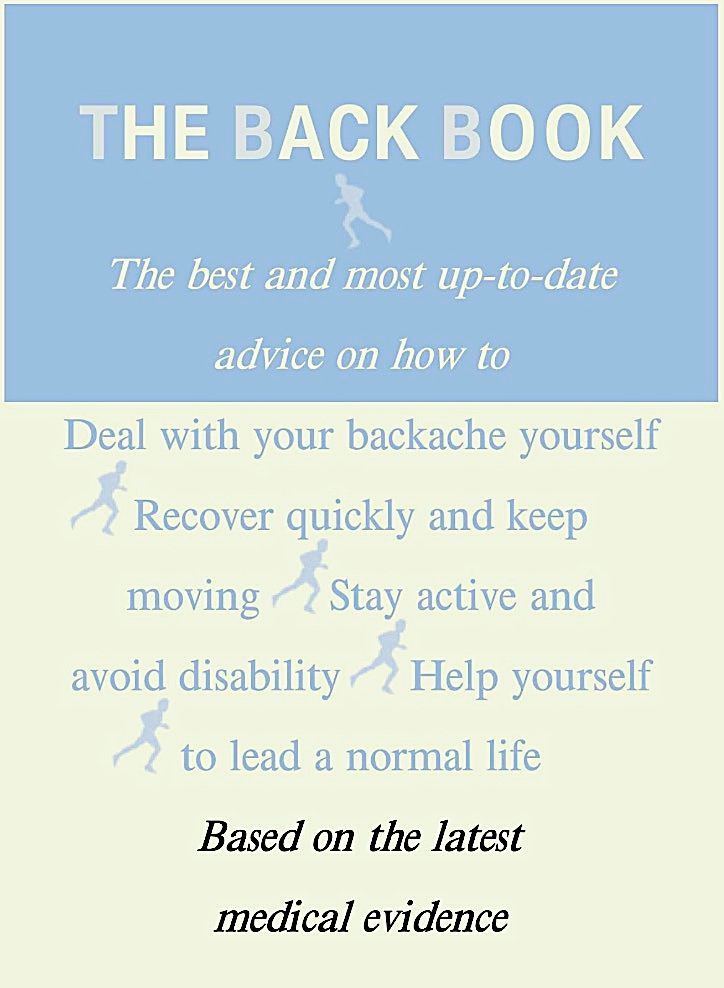Lower Back Pain
Worldwide, lower back pain ("LBP") is an extremely common problem. It is the leading medical complaint involving the body’s muscles and skeleton and the leading cause of activity limitation and work absence through much of the world, causing an enormous economic burden. Roughly 15% of 20-year-olds rising to 30% of 70-year-olds experience low back pain, with 84% of people experiencing this issue at some time in their life. LBP is defined as rear body pain anywhere from the bottom of the ribs to the top of the thighs, with or without pain in the legs. Pain is categorized as acute (lasting up to 4 weeks), subacute (lasting 4 to 12 weeks) or chronic (lasting greater than 12 weeks). There are recent major changes unfolding internationally for the management of LBP.

Diagnosis
-
A focused history and physical examination, including of the spine as shown in this chart, is the appropriate starting evaluation to place individuals into one of three broad categories:
- Nonspecific pain (almost 90% of individuals that see their doctor);
- Specific issue (less than 10%) such as a compression fracture or a spinal nerve root issue; or
- Serious problem (less than 1 percent) such as spinal cord compression or metastatic cancer.
-
It is a common belief and, until recently, a common practice that an imaging study (such as an MRI, CT scan or ultrasound) should be routine to diagnose low back pain. However, these studies have been shown to be of limited usefulness because they often show abnormal findings in adults without low back pain, known as incidental findings. Even popularly described “red flags,” such as numbness (other than a history of cancer), are not effective indicators for imaging.
Causes
-
Risk factors include obesity, smoking (due to the impact of nicotine on blood flow), age, female gender, physically strenuous work, sedentary work, psychologically strenuous work, low educational attainment, Workers’ Compensation insurance, job dissatisfaction, and psychological factors such as somatization (perceived pain) disorder, anxiety and depression.
-
While there is an understandable temptation to identify a specific cause for every incidence of low back pain, this pursuit can be counterproductive as it may lead to testing, interventions, time and effort that are simply not supported by current evidence.
“ I Heard That…
-
Over $100 billion is spent annually by consumers on “spine medicine” that doesn't work. Is that true?
 Yes!
Yes! -
There is an exercise to manage lower back pain with lots of star power?
 Yes, everyone from Lady Gaga, Tiger Woods, Madonna, Sting, Andy Murray, and dancers from the Joffrey Ballet and Alvin Ailey American Dance Theater...
Yes, everyone from Lady Gaga, Tiger Woods, Madonna, Sting, Andy Murray, and dancers from the Joffrey Ballet and Alvin Ailey American Dance Theater... … Are devotees of gyrotonics! Learn more about it here.
Treatment
-
Patient education about self-care and pain management; reassurance; superficial heat; staying active; and, as needed, the brief use of ibuprofen and acetaminophen on a combined dosage are the strongest basic treatment elements, as further specified in this decision tree.
-
Exercise and/or physical therapy is an important treatment step. However, no particular activity has been demonstrated as superior and the exact mechanism of impact is not clear. Selection should be based on preference and experience. Options, in order of increasing complexity, include:
- Walking
- Aerobic exercise
- Community-based activity programs
- Stretching
- Pilates
- Yoga
- Tai chi
- Alexander technique
- Directional preference
- Core exercise and spinal stabilization
- Graded activities exercise / back boot camp / functional restoration
- Multidisciplinary (interdisciplinary) rehabilitation
-
Effectiveness of exercise and/or physical therapy is driven by the effectiveness of how those activities are performed. And to guide effective activity, there is a very wide range of care providers with a very wide range of experience and training credentials (among and within these professions). The following types (along with numbers based on 2018 US data from the Bureau of Labor Statistics and the American Board of Medical Specialties) of relevant providers are described in this chart.
Types and #s of relevant providers-
Physiatrists (11,813)
- Board certified medical doctors in Physical Medicine and Rehabilitation
- Seven unique sub-specialties, such as neuromuscular and sports medicine
-
Exercise physiologists (15,800)
- Accredited to prescribe exercise and lifestyle programs to help treat or prevent specific health conditions or injuries.
-
Athletic trainers (31,100)
- Requires a bachelors degree and passing an accredited program
-
Occupational therapists (133,000)
- Trained with a focus on the ability to perform activities of daily living (ADL)
- Typically Masters degreed in one of 10 specific areas of certification
-
Physical therapists (247,000)
- Bachelors degree plus 3 years of training to understand and guide movement of the body
- Substantial training thereafter to pursue 10 different specialty areas including clinical electrophysiology and women's health
-
Fitness trainers and instructors (356,900)
- Requires associate or bachelors degree, along with various certification options
-
Physiatrists (11,813)
-
Muscle relaxants, if sedating effect can be tolerated, massage, and acupuncture are all possible elements of an effective treatment plan. Despite extensive study, spinal manipulation (as performed by, say, a chiropractor) has had limited demonstrated and sustained impact with frequent minor complaints and very rare serious adverse events.
-
The following commonly advised actions are not proven to be impactful and can, in fact, delay recovery: Bed rest and other inactivity; cold compression; muscle energy technique; traction; changing a bed mattress; para-spinal injections; antidepressants; systemic glucocorticoids; anti-epileptics; topical agents such as lidocaine; interferential therapy; short-wave diathermy; transcutaneous electric nerve stimulation; low-level laser therapy; and herbal therapies.
-
Despite a desire to identify medicine that reduces pain, an overwhelming amount of research shows most pain medicines have little to no effect as compared to placebo for people with LBP. As described in this video, pain is now understood to be controlled by the brain; is not necessarily an indicator of damage to body tissue; and is experienced in a particular way by individual and situation. For instance, if you strain your back as you run out of a burning building, you may not be aware of pain until you are safe. Two individuals may have identical images showing a herniated disk, however, one experiences pain and the other does not. Therefore, an individualized comprehensive “brain and body” approach is essential to management of pain, especially chronic pain.
What to expect
-
Prognosis is excellent as 70 to 90 percent of those with LBP improve within seven weeks. While recurrences are common, and in fact 70% of people have a recurrence within 12 months, recurrences also have a favorable prognosis. This free e-book can serve as an ongoing reference.
-
Exercise interventions to bend and lift correctly and to take a break from sitting or standing may prevent recurrence.
-
Despite active promotion of back relief products such as lumbar supports, these products are not demonstrated as preventing recurrence of LBP. And, despite association with causation, smoking cessation and weight loss are also not demonstrated as preventing recurrence of LBP.
Citations
What is your readiness to take action, based on this information?
-
Physiatrists (11,813)
- Board certified medical doctors in Physical Medicine and Rehabilitation
- Seven unique sub-specialties, such as neuromuscular and sports medicine
-
Exercise physiologists (15,800)
- Accredited to prescribe exercise and lifestyle programs to help treat or prevent specific health conditions or injuries.
-
Athletic trainers (31,100)
- Requires a bachelors degree and passing an accredited program
-
Occupational therapists (133,000)
- Trained with a focus on the ability to perform activities of daily living (ADL)
- Typically Masters degreed in one of 10 specific areas of certification
-
Physical therapists (247,000)
- Bachelors degree plus 3 years of training to understand and guide movement of the body
- Substantial training thereafter to pursue 10 different specialty areas including clinical electrophysiology and women's health
-
Fitness trainers and instructors (356,900)
- Requires associate or bachelors degree, along with various certification options









